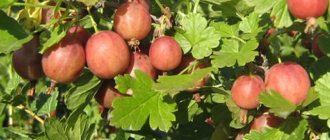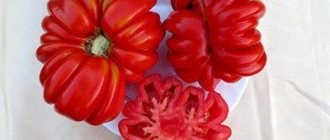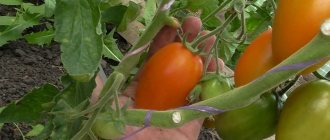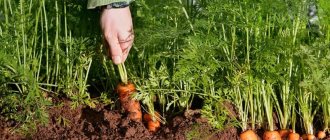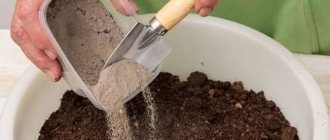Description of the variety
Let us consider in detail how the Setton variety differs from others.
Origin and development
Setton onions originated in the Netherlands specifically for cultivation in northern Europe. It is precisely for its resistance to low temperatures that Russian gardeners and farmers fell in love with it. Growing Setton onions does not cause difficulties in our northern regions.
Chemical composition and beneficial properties
Onions are rich in B vitamins, as well as C, E, H, K, PP, and beta-carotene (provitamin A).
The vegetable contains the most carbohydrates (8.2 g per 100 g of product) and dietary fiber (3 g per 100 g of product).
Onions are rich in macroelements such as potassium, sulfur, calcium, chlorine and magnesium. It also contains:
- essential amino acids (arginine, valine, histidine);
- nonessential amino acids (alanine, glycine, tyrosine);
- omega-3 and omega-6.
Ripening period
Late ripening, ripens in August.
Productivity
It is characterized by increased productivity, which is why gardeners love it so much. The yield is 6 kg per square meter. m. Ripening before harvesting itself is 96%, in comparison with other varieties this is an increased figure.
Disease resistance
Setton, like other representatives of onions, is not immune from diseases. The risk of disease will be significantly reduced by preventive measures. It is recommended to treat the feather with a solution based on copper sulfate when it reaches a height of 15 cm. This will ensure resistance to fungus.
It is also necessary to treat the seedlings before planting. The seed material is soaked either in a special solution (“Quadris”), or proven folk remedies are used (saline solution, then a solution of potassium permanganate). By preparing the material in this way, you will protect it from most diseases and pests - such as downy mildew, neck rot, nematodes, and onion flies.
Characteristics of the bulb
Dense golden bulbs grow up to 120 g. Their rounded shape tapers towards the tail. “Turnips” are perfectly stored. The surface of the onion is covered with dry brown scales. Inside contains white pulp with a pleasant, mild taste.
The feather reaches a height of 30 cm. The bulbs weigh 150-170 g.
The vegetable can be consumed fresh and for processing.
Climate requirements
The Dutch variety is resistant to cold weather. The bulbs feel great at a temperature of -15°C, provided there is no snow cover.
Since the variety is unpretentious, it is grown in both the southern and northern regions.
How to grow
Video: When to plant onion sets in the Urals
An open, sunlit area is suitable for planting the crop. Soil requirements:
- fertile;
- well drained;
- moderately moisturized;
- without close groundwater.
For setton, loam or sandstone is preferable, so that the loose soil provides air circulation to the roots. The soil acidity level fluctuates in the range of 6.5-7 pH.
Onions are planted after:
- tomatoes;
- cabbage;
- potatoes;
- cucumbers
Bad predecessors for the plant: carrots or garlic.
How to plant
Soil preparation is carried out in the fall: digging, removing weeds, adding organic matter (5 kg of manure, 500 g of ash per 1 m2). Before planting, the bed is leveled with a rake. The following planting schemes are followed:
- distance between bows – 10 cm;
- row spacing – 25 cm.
If seeds are planted
Soaking onions
Heat treatment is required. Seeds are immersed in warm liquid for 3 hours: specimens unsuitable for planting will appear at the top. The seed is disinfected by soaking it in a pink solution of potassium permanganate for 30 minutes. Next, wash and place in water heated to 50 °C for 40 minutes. They do not skip hardening. After heat treatment, the seeds are placed in the refrigerator for half an hour. The material can be planted.
Seeds are planted in peat tablets or individual cassettes. Place it on the sunny side of the windowsill.
On a note. To speed up the process of harvesting, the seeds are germinated for a week in a napkin soaked in water. Then the seedlings are transplanted into peat cups or specially designed containers with nutritious and fertilized soil.
Care for the seedlings, periodically watering the seedlings abundantly. Feed after 2 weeks with liquid organic matter.
Transplantation into open ground is combined with hardening off the plants: they are taken out into the yard in the sun for a short time. Spending time outdoors gradually increases. The procedure lasts 7 days. Plants are transplanted into beds in early May at an air temperature of +12 °C. Sprinkling the bulbs with soil - 2-3 cm. Preference is given to raised beds.
Pre-winter sowing
Most gardeners speak positively about winter planting of onions, which provides a harvest at least 2 months earlier than usual. Weather conditions are carefully monitored for timely planting of seedlings. The time is right if the air temperature has been +5 °C for several days, and frosts are expected in 2-3 weeks. Usually this is November, sometimes October. The seedlings are buried 6 cm to prevent freezing.
Planting onions before winter
The rows are sprinkled with peat and fertile soil. Available materials are used as mulch: leaves, spruce branches, straw. The protective shelter is removed when it becomes warm.
The advantages of planting vegetables before winter are noted:
- early harvest;
- high yield;
- improved vegetable resistance to bolting and negative environmental influences;
- the use of small bulbs, up to 1 cm in diameter, the preservation of which until spring is problematic.
Spring sowing
Varied onions are planted in open ground when the air warms up to +12 °C, otherwise the vegetable must be covered. The sowing depth in spring is from 3 to 5 cm. When using agrofibre, the seedlings are planted when the snow melts. Without shelter, onions are planted later if there is no cold weather.
For the northern regions, the last ten days of April or the beginning of May are appropriate. Mulching the beds with hay, rotted sawdust, and straw promotes rapid germination. When greenery appears, the covering material is removed.
Landing
It is important to prepare bulbous plants for planting correctly. Drying and warming of the sets will be required. If planting is planned in a few weeks, the seed is kept at +20 °C. The day before the planned work or immediately before it, the bulbs are heated at 35-40 ° C. The sevok is placed in hot water and kept for 20 minutes. This agrotechnical technique activates germination and reduces the formation of shoots. It is a good idea to disinfect the bulbs with copper sulfate or potassium permanganate. A growth stimulator is suitable for these purposes.
Copper sulfate solution
How to care
To get a good harvest, it is useful to follow the rules of onion care.
Watering
Water the plants once a week. Water is consumed in a volume of 10 liters per 1 m2 of onion. Do not allow the soil to dry out or water to stagnate. In the middle of the summer season, watering of plantings is reduced due to the ripening of the bulbs. This does not apply to the dry period, when frequent moistening of the seedlings will be necessary. Before harvesting, watering is suspended 2-3 weeks.
Important! It is appreciated to carry out watering in the first half of the growing season, before the phase of active development of the bulbs.
Loosening the soil and removing weeds
To increase the breathability of the soil and oxygen access to the root system, loosening will be required. Periodically loosen the soil between the rows. When the onion reaches medium size, the soil is raked away from the vegetable. When weeds appear, weeding is carried out, avoiding clogging of the plantings.
What should you feed?
During the growing season, 3 feedings are carried out:
- 2 weeks after landing. Feed with organic matter in liquid form at the rate of a 10-liter bucket per 1 m2 of area;
- After 1 month. Mineral fertilizers are applied: potassium sulfate and ammonium nitrate, spending 15 g per 1 m2;
- 2 months after fertilizing for the first time. Fertilize with products that contain calcium.
How to deal with pests and diseases
Preventive special treatment against fungal infections will not hurt. When the feather reaches 15 cm in length, Setton onion sets are treated with copper sulfate. The solution is prepared from 10 liters of water with the addition of 1 tsp. substances. For better adhesion, add liquid soap (1 tbsp) to the mixture. Only the feathers are sprayed, using 500 ml of liquid per 1 square meter. m .
Experienced vegetable growers advise disinfecting the sets with Quadris or Bordeaux mixture so that the plants do not suffer:
- rust and neck rot;
- peronosporosis and onion fly;
- black mold and fusarium.
The ideal solution to resist harmful insects is the proximity of carrots to onions. In this way, plants protect one another. Copper oxychloride is used as a prophylactic drug.
Incorrect care of vegetables can lead to problems:
- White feather color with a gray coating – moisture deficiency;
- Faded green feathers – waterlogging;
- Short and slowly developing feathers in small quantities - lack of nitrogen fertilizers;
- Corrugated gray leaves - lack of potassium fertilizers;
- Drying of vegetable crops ahead of schedule is a phosphorus starvation.
How to collect and store
Harvesting for winter storage occurs in August. By the nature of the ripening of onion peels and the lodging of feathers, the beginning of harvesting is judged.
Feathers must fall
Plants are pulled out of the soil in dry weather. To dry, lay them out in a garden bed, attic or under a canopy. Dried feathers are trimmed, leaving a tip 4 cm long. The roots are also cut off. Leave for a week and a half for final drying. A cellar, basement, or insulated utility room are suitable for storage. Shelf life - about 7 months with ventilation, humidity - 75%, temperature - 0...+4 °C or +18...+22 ˚C.
The main advantages and disadvantages of the variety
The only drawback is the high price of seed. But if you grow onions yourself, you can easily get the seeds and germinate the sets yourself.
Advantages of the variety:
- frost resistance;
- does not form many arrows;
- unpretentious to the soil;
- synchronous ripening of all seed material;
- high germination and productivity;
- well stored (sets and turnips themselves);
- has a pleasant, moderately spicy taste.
Pros and cons of culture
Bow Hercules
Advantages of Satton:
- immunity to diseases;
- resistance to shooting;
- friendly ripening of fruits;
- long-term storage without rotting and germination;
- the possibility of growing plants for sale due to yield and presentation;
- almost 100 percent ripening.
Sevok is frost-resistant. If there is no snow cover at all, the crop is not afraid of -15 °C. Withstands lower temperatures in the presence of snow. Tolerates and survives to a maximum of -23 °C.
Flaws:
- strict adherence to the technological process;
- high price of seed.
Russian gardeners are not yet accustomed to this type of onion. Its cultivation on a summer cottage promises many benefits. Used in cooking, cosmetology, folk medicine. A description of the Setton onion variety will help novice summer residents become familiar with agricultural techniques and please themselves with an excellent harvest.
Features of planting and growing
The Setton variety is unpretentious in care. But there are nuances, knowing which you will get a much larger harvest, untouched by diseases and pests.
Preparing for landing
Regardless of the landing, preparations begin in the fall.
The place must meet the following requirements:
- be open and well warmed by the sun;
- not flooded by groundwater;
- the soil should be loose for oxygen saturation and better water retention.
Sevok is either purchased or grown independently. Before planting, dry and warm at a temperature of 20°C.
Reference. Some gardeners warm up the bulbs the day before sowing by immersing them in hot water for 15-20 minutes. This is not necessary, as there is a risk of accidentally cooking the delicate seed.
The seeds are soaked for three hours in a saline solution to stimulate physiological processes. Then they are immersed in a solution of potassium permanganate for two hours, thereby disinfecting the seed.
Soil requirements
Loams with a neutral or slightly acidic pH are suitable for this variety.
The soil is dug up and organic fertilizer is applied (3 kg per sq. m).
You can’t do without fertilizing. For 1 sq. add the following ingredients one tablespoon at a time:
- nitroammofoska - complex fertilizer to increase productivity;
- superphosphate - to increase soil fertility;
- wood ash - to improve the mechanical and chemical composition.
Dates, scheme and rules of planting
There are two planting methods: winter and spring. Favorite among gardeners - winter - provides better yields compared to the classical method.
October-November is suitable for winter sowing, when the temperature stays within +5°C for several days. The harvest is early. Use bulbs with a diameter of 1 cm.
There are some nuances when planting in spring:
- planted as soon as the snow melts;
- cover material is used (with the appearance of greenery, remove it);
- A layer of straw, hay, and sawdust is poured on top of the planted seedlings;
- sowing time - in April or early May;
- use bulbs with a diameter of up to 2 cm.
Onion sets are planted at a distance of 10 cm from each other, and there should be a space of 30 cm between the rows. The sowing depth should be from 4 to 6 cm from the neck. Sprinkle a layer of earth (3 cm) on top and water.
Features of cultivation
Experienced gardeners advise making two beds side by side and growing onions on one and carrots on the other. The two cultures will protect each other.
Important. Grow carrots and onions in two separate beds, as they require different watering regimes.
The area of the plot does not always allow for correct crop rotation - growing onions every year in a new place. This problem will be solved by planting between the rows of onions - phacelia, which grows up to 10 cm. Such soil filling will enrich the soil with mineral and organic substances, and also disinfect it.
Nuances of cultivation
The best planting option for Setton is high ridges.
Attention. Weed and loosen the soil in a timely manner, do not forget about watering, as onions love water. But don't overdo it; too much moisture will cause the onions to rot.
Watering mode
Water according to the weather. Excludes excess moisture at the roots. Maximum watering is during the growth period of greenery and turnips.
Irrigation scheme:
- once every 10 days in case of rain;
- once every 5 days during hot weather;
- Stop watering 3 weeks before harvest.
Loosening the soil and weeding
Regularly loosen the soil between rows, before and after watering. Weed so that weeds do not choke out the cultivated plant.
Top dressing
The most popular scheme among summer residents is:
- the first fertilizing is with organic fertilizers (urea, saltpeter), two weeks after planting;
- the second - with mineral fertilizers (nitroammofoska), three weeks after the first feeding;
- the third - with calcium-based fertilizers, three weeks after the previous application.
Disease and pest control
In order for onions to feel good, experienced gardeners advise planting them next to carrots. They also follow these rules:
- Prophylaxis against fungus, in particular downy mildew, is carried out. When the height of the feather reaches 15 cm, spray the leaf with a solution of copper sulfate (1 tsp per 10 liters of water).
- If yellow spots appear on the feather, this is a sign of the development of fusarium (bottom rot). Fungicides are required for treatment.
- Drying onions for 10-12 days at a temperature of 25°C will save you from neck rot.
- Prevention before planting will help against stem nematode - water the soil with a salt solution (3 tablespoons per 10 liters of water).
- A tobacco solution will repel onion flies: 200 g of tobacco dust is poured into 3 liters of hot water and left for two days. Then add a tablespoon of liquid soap and 1 tsp. ground red pepper and bring the solution to a volume of 10 liters. Before spraying the soil and plants, filter the solution.
Caring for outdoor crops
Setton needs standard care, represented by a complex of works.
Watering
Setton should be watered regularly. Watering is especially important at the beginning of the growing season before active bulb growth begins. It is recommended to water the crop once a week, and during dry periods, double the frequency of watering. For 1 sq. m should consume no more than 10 liters of water.
Around the beginning of July, the bulbs begin to ripen. At this time, watering should be moderate.
Watering should be stopped completely 2 weeks before harvest.
Loosening and weeding
Thanks to loosening, the soil becomes breathable, and moisture is retained in it longer. The soil should be loosened regularly and at least once every 2 weeks. It is recommended to carry out such work after watering or heavy rain. You can’t loosen the soil too deeply; 3 cm is enough.
Getting rid of weeds is a prerequisite for caring for onions of any variety, including Setton. It is good to combine weeding with loosening. Work should be carried out as needed.
Plant residues from the garden need to be removed, and to prevent diseases and pests it is better to burn them.
Feeding
In addition to applying fertilizers during the autumn digging of the site, several additional feedings are required after planting the crop in open ground. Fertilizers should be applied for the first time half a month after sowing. At this stage it is better to use organic matter. It is better to use fertilizers in liquid form. For 1 sq. m requires 1 liter of liquid.
The second feeding is carried out 3-4 weeks after the first application of fertilizers. At this stage it is worth using mineral compounds. Ammonium nitrate and potassium sulfate are effective. For 1 sq. m need 15 g of fertilizer.
Before the third feeding you need to wait the same period. This time, the fertilizers applied should contain calcium.
During the month before harvest, only natural fertilizers are allowed. Chemicals should be avoided during this period.
Disease and pest control
Setton can be affected by downy mildew, neck rot, and rust. Affected specimens should be immediately removed and burned. Treat the remaining plantings with a fungicide.
Copper sulfate is used to prevent fungal diseases. Spraying is carried out when the feather grows to 15 cm. It is necessary to dissolve 1 tsp in 10 liters of water. substances and add 1 tbsp. l. liquid soap. This volume is enough to spray 20 square meters. m, only the leaves need to be processed.
Dusting or spraying with tobacco dust will help control the common pest onion fly. It is effective to mix it with black pepper and ash.
Harvest and storage
The harvest is harvested in dry weather, when brown scales have already formed on the “turnip” and the feathers sink to the ground. The onions along with the tops are laid out in a dry place (in the attic) to dry. Then the feather is trimmed, leaving the tip to 4 cm, and again left alone until completely dry.
Store in basements, cellars, utility rooms that are sufficiently dry and have ventilation, at temperatures from 0 to 22°C and humidity up to 80%.
If all conditions are met, the shelf life of the variety reaches 7 months.
Shetana onion: description and features of growing the variety
Almost all summer residents grow onions on their plots; without them it is simply difficult to imagine a vegetable garden. And this is not surprising, because the vegetable contains a huge amount of vitamins, minerals, easily digestible carbohydrates and organic acids.
One of the most popular varieties is Shetana onion. It is loved for its consistently high yield, pleasant taste of the bulbs and good keeping quality.
general characteristics
Shetana is considered a mid-early variety. If onions are grown from seeds, then their growing season is approximately 90–100 days. If from sets – 70–80 days. Czech breeders developed the Shetan onion variety.
The bulbs are beautifully round in shape with medium-density pulp. Their weight is about 45 grams when grown from seeds and 85 grams when planted as sets. The scales of the Shetana variety are straw-yellow in color, and the neck is of medium thickness. The pulp is white, with a semi-sharp taste. dry matter in it is 12%, sugar content is 6.3%.
This onion is suitable for both cooking and canning.
Shetana onion: description of the variety
The described variety is considered high-yielding, but the yield will depend on the region where it is grown. For example, in the central regions of Russia, the yield is approximately 50–60 centners per 1 hectare of plantings. In more southern areas it can reach up to 200 c.
This variety has very good ripening and high keeping quality. Under the right storage conditions, Shetana onions do not lose their presentation until spring. Keep it in dry rooms with an air temperature of 15–20 degrees.
Landing Features
Shetana is a fairly sun-loving variety, and this must be taken into account when planting. With a lack of sun, onion growth slows down and its taste deteriorates.
The vegetable can be grown both from seeds and from sets. In the first case, the seeds are placed in hot water for 20 minutes 3-4 days before sowing, then cooled in cold water for about 1 minute. After this, they need to be placed in a damp cloth and kept for 24 hours.
Shetan onion sets need to be sorted before planting. Remove bad bulbs and place them on a heating radiator for 1–2 days. In this way, you need to warm the onion so that arrows do not appear on it later.
When the bulbs warm up, they need to be soaked in a solution of any mineral fertilizer. After this, they should be kept for 1 minute in a solution of copper sulfate.
This protects the vegetable from fungal diseases.
Shetana onion sets are considered winter, so they can be planted in both spring and autumn. Experienced gardeners love planting before winter. This must be done 2-3 weeks before frost. At this time, the bulbs take root, but do not germinate. The distance between them must be approximately 10 cm, and between the rows - 20 cm.
In spring, planting is done after the soil has completely warmed up.
Onion care
Shetan's onion needs care. You need to loosen the soil even before the shoots appear. Due to this, a crust does not form on the ground, which promotes rapid germination of the sets. It is advisable to repeat loosening every 2 weeks. Weeds also need to be removed frequently.
Onions respond well to regular feeding. Fertilizer must be applied the first time before planting, and then regularly throughout the growing season. When digging into the ground, you need to add organic fertilizers (chicken droppings, mullein). The first fertilizing is carried out when seedlings appear.
Solutions of organic fertilizers are suitable here. When the feather reaches a height of 10–15 cm, a second feeding is carried out. In this case, mineral fertilizers with a high nitrogen content are suitable. The third feeding is carried out when the bulbs begin to actively grow. At this time, potassium fertilizers are needed.
Shetan onions need to be watered about 2 times a month. Watering should be stopped 30 days before harvesting.
Some useful tips:
- onions grow well in beds after legumes or nightshade crops;
- does not like places where garlic, cucumbers or asparagus grew before him;
- An excellent option would be to plant the crop next to a bed of carrots or peppers, which protect the onions from pests;
- if the feather becomes white-gray, this means that the vegetable lacks moisture;
- when the greenery becomes pale, it means, on the contrary, the plant is overwatered;
- During active growth, onion sets must be fed; it is good if this procedure is repeated 2-3 times per season.
Diseases and pests
Shetan's onion is resistant to rot diseases, but suffers from dangerous downy mildew, that is, powdery mildew. This is an acute fungal infection that tends to spread quickly. Sick bulbs are very difficult to distinguish from healthy ones, so the disease can destroy the entire crop.
This disease appears in the form of a gray coating on the feathers of onions, which is clearly visible in the morning during dew. First, yellow spots form on the feathers, and then gray-violet spores.
To prevent peronosporosis, you must adhere to the following recommendations:
- choose sunny areas for planting where there have been no fungal infections before;
- do not plant onions thickly;
- Be sure to harvest the entire crop and dig up the beds in the fall.
If you plant onions according to all the rules and take care of them in the future, then a good harvest and high taste are guaranteed.
Reviews about the Setton onion variety
Numerous positive reviews about the Dutch variety confirm its frost resistance and other advantages:
Vladimir, Tver : “Very pleasant taste, not bitter. I grow it every year and have never regretted it. My setton does not get sick or rot, because before planting I am looking for a new place for it. In the onion bed, I plant wild pink clover, it enriches the soil with nitrogen. And next year, the soil is prepared for growing onions. The harvest is always great."
Natalya, Petro.
